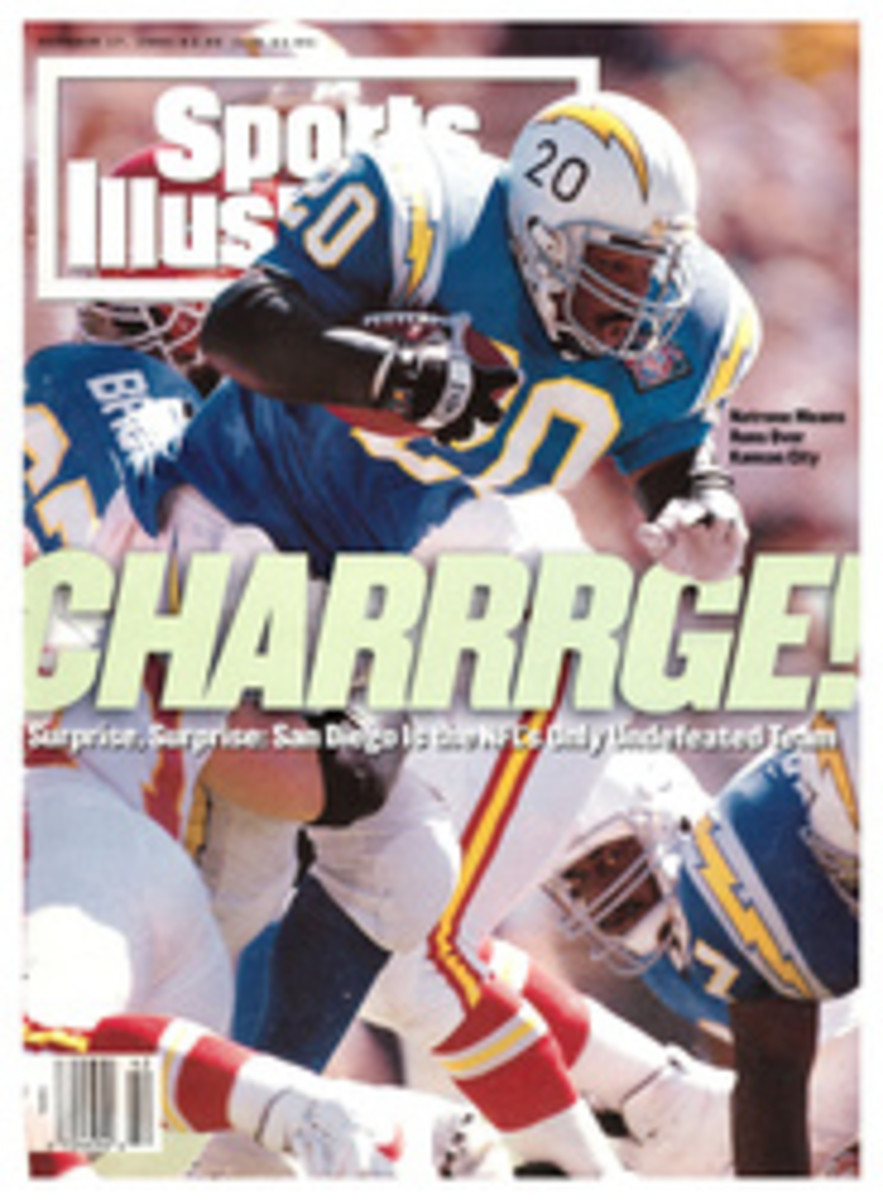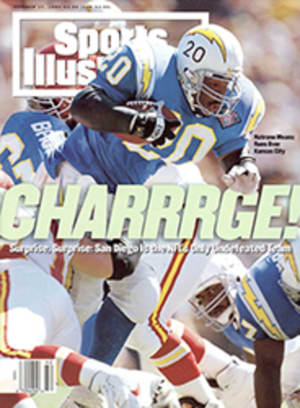
A Stitch in Time
Ray Materson is dressed in his usual green fatigue pants and spotless white T-shirt. Sitting slumped behind an empty cafeteria table, he pushes his dark shoulder-length hair back from his brooding face. Only the watery blue eyes betray a softness in what is an otherwise threatening visage.
Materson has been a drunk and a drug addict for many of his 40 years. As inmate number 162895 at the Carl Robinson Correctional Institution in Enfield, Conn., he is serving a 15-year sentence for kidnapping and armed robbery. But at the moment, in a resonant voice and with exquisite diction, he is reciting Shakespeare from memory: "I saw her coral lips to move/And with her breath she did perfume the air."
The convict, it turns out, has several other personae, including amateur actor (he played Lucentio in a production of The Taming of the Shrew in Grand Rapids, Mich.), college graduate (Grand Valley State in Allandale, Mich.) and gifted artist. As the last of these, Materson embroiders painstakingly detailed tableaux, many depicting athletes in action, onto fragments of cloth no larger than the palm of his hand.
Materson's must be one of the strangest and most circuitous paths ever taken by an artist. As a child, moving from one small Midwestern town to another with an abusive, alcoholic father and an understandably beleaguered mother. Materson found refuge in athletics and in the powerful, if only imagined, protective-ness of his heroes—Mickey Mantle, Roger Maris, Johnny Unitas and Muhammad Ali. But as he grew older and angrier, the sanctuary Materson had found among his idols was overwhelmed by despair.
When he finally hit bottom, a single burst of creativity turned his life around. In December 1988 Materson was in a maximum-security cell at Somers State in Connecticut, wondering how he was going to get through 15 years of incarceration. "I prayed that someone would just come let me out; I prayed that this was all somehow a mistake." he says. "But the doors didn't spring open. I didn't deserve to be let out."
Materson believes his prayers were answered anyway. "I was sitting on my bunk," he says, ' "and I looked at the top of this rubber dish, and it reminded me of my grandmother's sewing hoop. Growing up I would watch her in her rocking chair, stitching for hours. I'm sitting here, and I could almost see her there." Materson was moved. He wanted to sew something himself.
The Rose Bowl game between USC and his home-state school, Michigan, was just days away, so Materson decided to make a Wolverine visor. With a pack of cigarettes, the universal prison currency, he bought a pair of yellow-and-blue tube socks from another prisoner. Then, using nail clippers, he cut off the top of the dish to make a sewing hoop. Stretching a handkerchief over the hoop and using thread he had unwound from the tube socks, Materson embroidered a small patch in the shape of the letter M. He transferred the patch to a visor he had fashioned from the waistband of a pair of boxer shorts, some plastic and shoelaces. The project took 12 hours and left him bemused. "It was like I was guided," he says. "There was something providential about it."
Materson's creations quickly became popular with the other prisoners, who requested their own patches: NFL logos; Italian. Puerto Rican and Confederate flags; Harley-Davidson emblems. What had begun as a way of emulating a favorite relative soon became a way of life, one that offered Materson a means of communicating with the world outside prison.
But it was prison, he says, that saved his life by giving him the opportunity to become an artist. "I believe we all have a drive to create," says Materson, who has served seven of his 15 years and will be eligible for parole next spring. "If it's not nurtured, then the exact opposite happens: People learn to destroy, and sometimes they destroy themselves."
Last year Materson finished a series of nine tapestries, each consisting of thousands of stitches and taking up to 50 hours to complete. They are baseball-card-sized portraits of the starting players on Materson's favorite team from boyhood, the 1963 New York Yankees.
Using photographs of the players he found in books and magazines, Materson recreated the '63 lineup. I here is a profile of a golden-haired Mickey Mantle, his thick forearms bulging as he swings for the seats, the fans behind him detailed down to their ties and hats. In the background of Materson's close-up of Tom Tresh waiting for a pitch, you can see a boy sitting in the first row holding a transistor radio to his ear. Thousands of stitches make up the wire-mesh fence behind Roger Maris as he warms up in the on-deck circle. And in an embroidery that nearly leaps to life, third baseman Clete Boyer, his shadow beneath him, seems only momentarily frozen in his crouch as he extends his glove to the left, waiting for the next pitch to reach the batter.
One of Materson's most poignant works takes its subject from the life of the ill-fated boxer Sam Langford, who was known as the Boston Tar Baby. Langford. square-shouldered and powerfully built (though he stood only 5'8"), lived in Cambridge. Mass., in the earl) 1900s. Often matched against opponents who outweighed him by 25 or 30 pounds—heavyweights such as Jack Johnson—he had a remarkable 187 wins (116 by KO) in 291 fights. But when he died in a Boston tenement in 1956 at the age of 69, he had been destitute and blind for nearly 15 years.
Materson identifies with Langford's hard life and battling spirit. His intricate 2½-by-3‚Äö√Ñ√∂‚àö√±‚àö‚à´-inch tableau of the boxer is an imagined scene from the end of his life, and it is haunting. An elderly Langford sits before an open apartment window framed by limp green curtains. An empty chair faces the old fighter, as if he were waiting for a visitor. The wallpaper is torn, but a trophy stands proudly on a cupboard; Langford's boxing gloves hang nearby. "There is no one to help him," says Materson matter-of-factly.
Word of Materson's art has reached beyond the prison's walls, and exhibits of his work have been mounted in Connecticut and New York City. Writing in The Village Voice, Elizabeth Hess said of Materson's exhibit at New York's American Primitive Gallery last year, "[He] is an obvious talent...and his embroidered miniatures are remarkable for their abundance of detail." Through the gallery Materson has also begun to sell his pieces for $1,000 to $3,000; until he is released, the profits will continue to go to his wife, Melanie. In January, Materson made the biggest sale of his still-fledgling career to a private collector, receiving $15,000 for the '63 Yankee series.
Most days, when he is not picking up trash in the prison's courtyard (for which he earns $18 a month) or being interrupted by one of the eight daily head counts, the artist sits on his bunk bed and sews, sometimes for 10 or 12 hours at a stretch. Materson's art is his means of keeping at bay the oppression of both his prison life and his past. Among the threads of his life and those of his new career, he has found a haven.
PHOTO
MANNY MILLAN
When not embroidering, Materson does paintings like the one behind him of a ballpark scene.
FIVE ILLUSTRATIONS
COURTESY OF AMERICAN PRIMITIVE GALLERY
Earlier this year Materson's '63 Yankee team series sold for $15,000; his portrait of Langford (below, right) reflects the artist's own despair.

